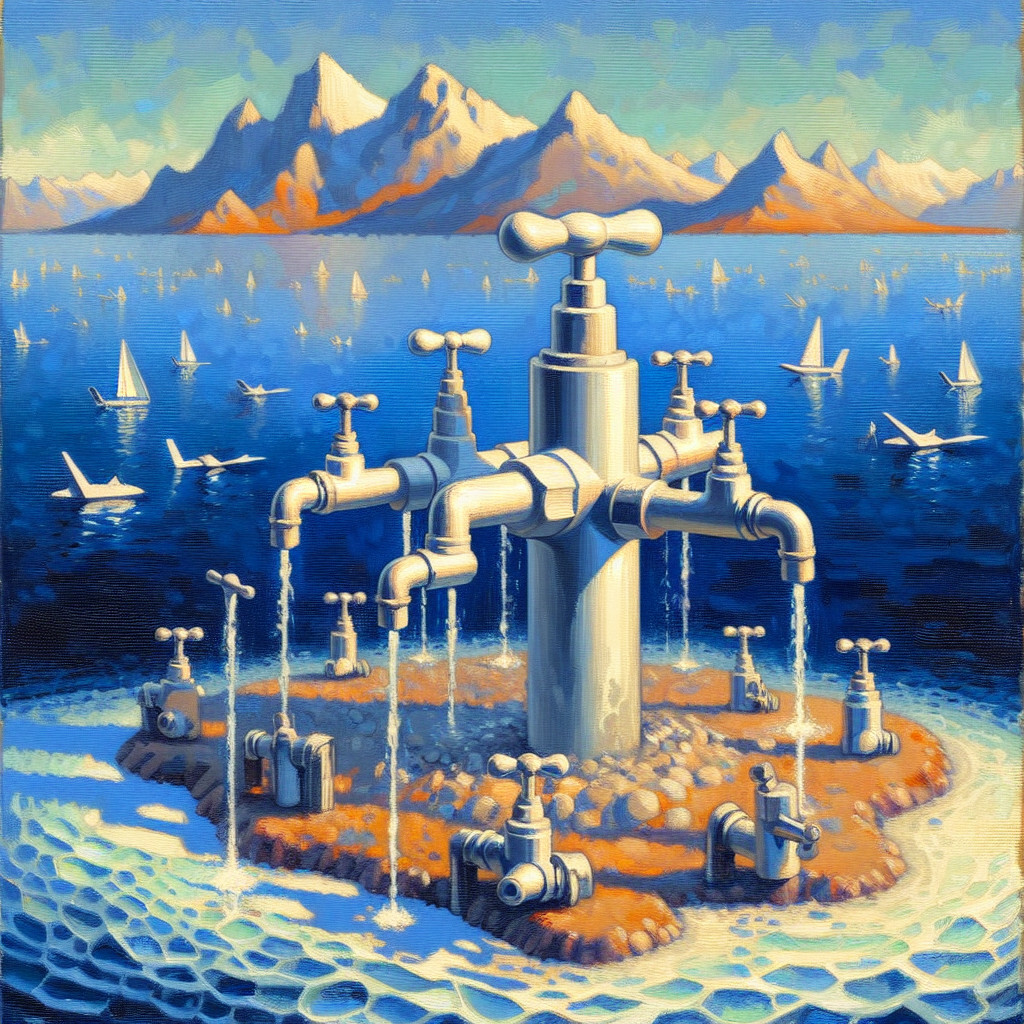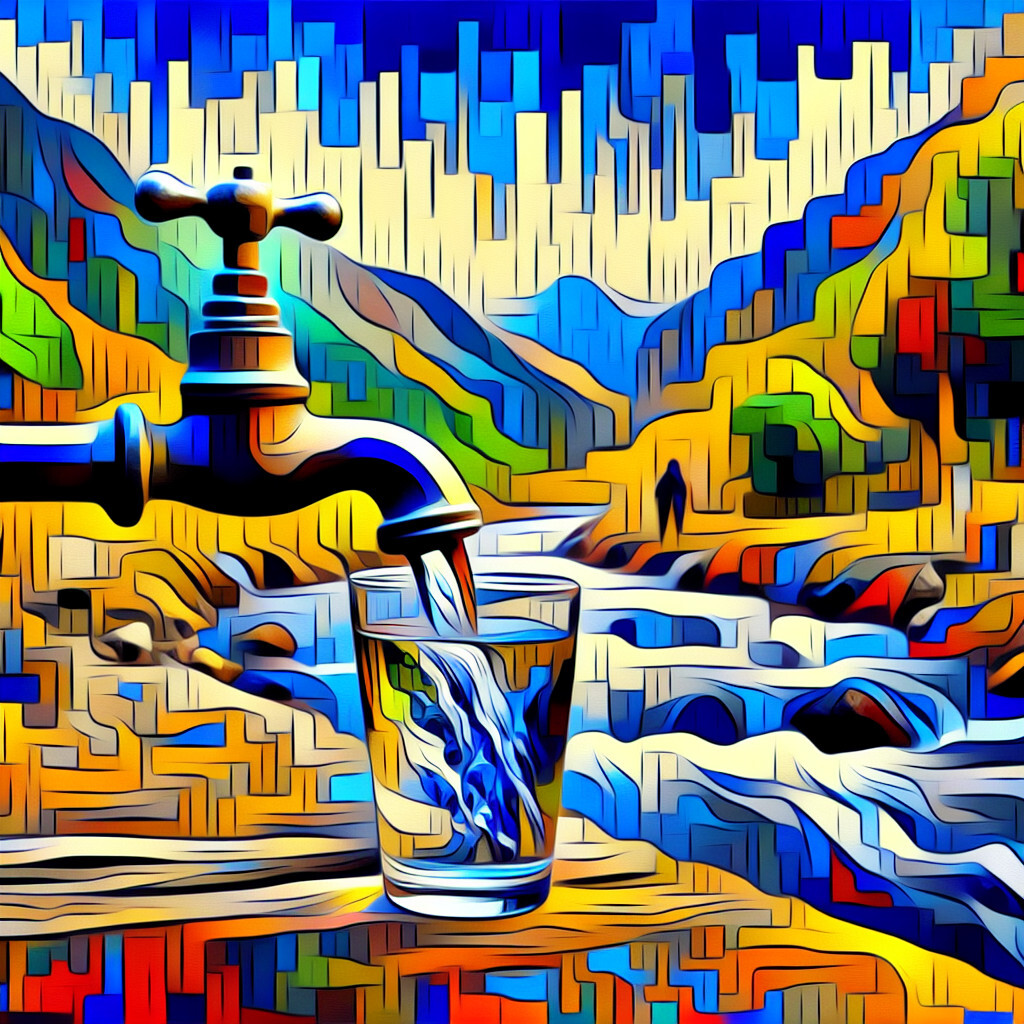-
Table of Contents
“Marshall Islands’ Tap Water: A Challenge of Quality and Accessibility.”
Introduction

The tap water in the Marshall Islands, a chain of volcanic islands and coral atolls in the central Pacific Ocean, is not considered safe for drinking. The islands face significant challenges related to water quality and scarcity. Contamination from saltwater, inadequate sanitation infrastructure, and pollution from human activities have all contributed to the poor quality of tap water. Additionally, the islands’ reliance on rainfall for their freshwater supply makes them vulnerable to drought and climate change. Therefore, residents and visitors are often advised to drink bottled or boiled water.
Understanding the Quality of Tap Water in Marshall Islands
The Marshall Islands, a picturesque chain of volcanic islands and coral atolls in the central Pacific Ocean, is known for its rich marine biodiversity and stunning landscapes. However, beneath this tropical paradise lies a pressing concern that affects the daily lives of its inhabitants – the quality of tap water.
The tap water in the Marshall Islands is a subject of significant concern due to a variety of factors. The islands’ geographical location and climate, coupled with infrastructural challenges, have resulted in a complex situation where the quality of tap water varies greatly across the region.
The primary source of tap water in the Marshall Islands is rainwater, which is collected in catchment systems and stored in tanks. This method of water collection is highly dependent on the weather, and during periods of drought, the water supply can become critically low. Moreover, the quality of the collected rainwater is often compromised due to inadequate maintenance of the catchment systems and storage tanks, leading to contamination.
The islands’ groundwater resources, another potential source of tap water, are also fraught with issues. The low-lying atolls have a limited freshwater lens, which is a layer of fresh water floating on denser sea water in an aquifer. This lens is highly vulnerable to over-extraction and contamination from human activities, including waste disposal and agriculture. Furthermore, the threat of sea-level rise due to climate change poses a significant risk to the quality and availability of this freshwater resource.
In addition to these natural and environmental challenges, the Marshall Islands also face infrastructural issues that affect the quality of tap water. The islands’ water supply and sanitation infrastructure is outdated and in dire need of upgrades. The existing water treatment facilities are often unable to adequately treat the water to remove contaminants, resulting in tap water that is not always safe for consumption.
The government of the Marshall Islands, in collaboration with international organizations, has been working to address these issues. Efforts are being made to improve the water infrastructure, including the construction of new water treatment facilities and the implementation of better maintenance practices for existing systems. Additionally, initiatives are underway to promote water conservation and improve the management of water resources.
Despite these efforts, the quality of tap water in the Marshall Islands remains a pressing issue. Residents are often advised to boil tap water before consumption or to rely on bottled water, which can be expensive and contribute to plastic waste.
In conclusion, the quality of tap water in the Marshall Islands is influenced by a complex interplay of environmental, infrastructural, and human factors. While efforts are being made to improve the situation, it is clear that a sustainable solution will require a comprehensive approach that addresses not only the infrastructural challenges but also the broader environmental and climate-related issues. As the world grapples with the realities of climate change, the situation in the Marshall Islands serves as a stark reminder of the urgent need for sustainable water management practices.
The Impact of Climate Change on Marshall Islands’ Tap Water
The Marshall Islands, a low-lying chain of atolls and coral islands in the central Pacific Ocean, is grappling with the profound impact of climate change on its tap water. This is a critical issue that threatens the livelihood and health of the island’s inhabitants. The islands’ geographical location and topography make them particularly vulnerable to the effects of climate change, including rising sea levels, increased storm intensity, and changing rainfall patterns. These changes have a direct and significant impact on the quality and availability of tap water in the Marshall Islands.
Rising sea levels, one of the most visible effects of climate change, pose a significant threat to the islands’ freshwater resources. The Marshall Islands are only about six feet above sea level on average. As sea levels rise, saltwater infiltrates the freshwater lens, a layer of fresh water that floats on top of denser saltwater in the island’s porous coral soil. This freshwater lens is the primary source of tap water for the islanders. Saltwater intrusion contaminates this freshwater source, making it unsuitable for drinking and irrigation.
Increased storm intensity is another climate change effect that jeopardizes the quality of tap water in the Marshall Islands. More intense storms lead to more significant damage, including the destruction of infrastructure that purifies and delivers tap water. Moreover, these storms can cause flooding, which can contaminate water sources with pollutants and debris. This not only disrupts the supply of tap water but also poses serious health risks to the island’s residents.
Changing rainfall patterns due to climate change further exacerbate the water crisis in the Marshall Islands. The islands traditionally rely on consistent rainfall to replenish their freshwater lens. However, climate change has led to unpredictable and erratic rainfall patterns, with periods of drought followed by intense rainfall. Drought conditions can deplete the freshwater lens, while heavy rainfall can lead to flooding and contamination of water sources. This unpredictability makes it challenging to manage and maintain a reliable supply of safe tap water.
The impact of climate change on the Marshall Islands’ tap water is a stark reminder of the urgent need for climate action. The island nation is implementing various adaptation strategies to mitigate these impacts. These include the construction of seawalls to prevent saltwater intrusion, the installation of water purification systems to ensure safe drinking water, and the development of rainwater harvesting systems to supplement the freshwater lens. However, these measures are costly and challenging for a small island nation with limited resources.
In conclusion, the tap water in the Marshall Islands is under severe threat due to the impacts of climate change. Rising sea levels, increased storm intensity, and changing rainfall patterns are contaminating and depleting the islands’ freshwater resources, making it increasingly difficult to provide safe, reliable tap water. While the islands are taking steps to adapt, the situation underscores the broader, urgent need for global action to mitigate the effects of climate change.
Health Implications of Drinking Tap Water in Marshall Islands
The Marshall Islands, a picturesque chain of volcanic islands and coral atolls in the central Pacific Ocean, is renowned for its rich biodiversity and vibrant culture. However, beneath this idyllic facade lies a pressing concern that has been plaguing the island nation for years – the quality of its tap water. The health implications of drinking tap water in the Marshall Islands are a topic of grave concern, warranting a closer examination.
The primary source of drinking water in the Marshall Islands is rainwater, which is collected and stored in catchment systems. However, during periods of drought, the islanders are forced to rely on groundwater wells and desalinated seawater. The quality of these alternative sources of water is often questionable, leading to a host of health issues among the local population.
The groundwater in the Marshall Islands is frequently contaminated with bacteria, heavy metals, and other harmful substances. This is largely due to the islands’ low elevation, which makes them susceptible to seawater intrusion, and the lack of proper sanitation facilities, which leads to the contamination of groundwater sources with human and animal waste. Drinking such contaminated water can lead to a range of health problems, including diarrheal diseases, hepatitis A, and typhoid fever.
Moreover, the desalinated seawater that is often used as a source of drinking water during droughts is not without its health risks. The desalination process involves the removal of salt and other minerals from seawater, which can result in water that is low in essential minerals such as calcium and magnesium. Long-term consumption of such demineralized water can lead to mineral deficiencies, which can in turn lead to a variety of health problems, including cardiovascular disease and bone disorders.
Furthermore, the Marshall Islands were the site of numerous nuclear tests conducted by the United States during the Cold War. The radioactive fallout from these tests has contaminated the soil and water in some parts of the islands, posing a serious health risk to the local population. Studies have shown that exposure to this radioactive contamination can lead to an increased risk of cancer, particularly thyroid cancer, and other serious health conditions.
In response to these concerns, the government of the Marshall Islands has been working to improve the quality of its tap water. Efforts have been made to upgrade the islands’ water infrastructure, including the construction of new water treatment plants and the implementation of stricter water quality standards. However, these efforts have been hampered by a lack of funding and technical expertise, as well as the challenges posed by the islands’ remote location and fragile ecosystem.
In conclusion, the health implications of drinking tap water in the Marshall Islands are serious and multifaceted. They range from the immediate risks posed by bacterial contamination and mineral deficiencies, to the long-term risks associated with radioactive contamination. While efforts are being made to address these issues, it is clear that much more needs to be done to ensure the safety and health of the islands’ population. Until then, the residents and visitors of the Marshall Islands are advised to exercise caution when it comes to drinking tap water, and to consider using bottled water or other safe sources of drinking water whenever possible.
Solutions to Improve Tap Water Quality in Marshall Islands
The Marshall Islands, a picturesque chain of volcanic islands and coral atolls in the central Pacific Ocean, is known for its rich marine biodiversity and stunning landscapes. However, beneath this tropical paradise lies a pressing issue that has been a cause for concern for its inhabitants and environmentalists alike – the quality of tap water.
The tap water in the Marshall Islands has been a subject of scrutiny due to its questionable quality. The islands’ geographical location and unique environmental conditions contribute to the challenges in maintaining a clean and safe water supply. The primary source of freshwater in the Marshall Islands is rainwater, which is collected and stored in catchment systems. However, these systems are often poorly maintained and are susceptible to contamination from various sources such as bird droppings, dust, and other pollutants. Moreover, the islands’ low-lying topography makes them vulnerable to saltwater intrusion, further compromising the quality of the tap water.
The government of the Marshall Islands, in collaboration with international organizations, has been working tirelessly to address these issues. One of the solutions being implemented is the improvement of the rainwater catchment systems. This involves regular maintenance and cleaning of the systems to prevent contamination. Additionally, the use of first-flush diverters, which discard the initial flow of rainwater that may contain contaminants, is being promoted.
Another solution is the installation of desalination units. Desalination is a process that removes salt and other impurities from seawater, making it safe for consumption. This technology has been proven effective in other island nations facing similar water challenges. However, it is worth noting that desalination is an energy-intensive process, and the high cost of operation can be a barrier to its widespread adoption.
To address this, the government is exploring the use of renewable energy sources, such as solar power, to operate desalination units. This not only makes the process more sustainable but also reduces the cost of operation. Furthermore, the abundant sunlight in the Marshall Islands makes it an ideal location for solar energy generation.
Education and awareness campaigns are also crucial in improving the quality of tap water in the Marshall Islands. The local population needs to be educated about the importance of proper water storage and handling to prevent contamination. Moreover, they need to be informed about the potential health risks associated with consuming contaminated water.
In conclusion, the quality of tap water in the Marshall Islands is a complex issue that requires a multifaceted approach. The solutions being implemented, such as the improvement of rainwater catchment systems, the use of desalination units powered by renewable energy, and education and awareness campaigns, are steps in the right direction. However, continuous efforts and collaboration among the government, international organizations, and the local population are necessary to ensure the provision of clean and safe tap water for all inhabitants of the Marshall Islands.
Q&A
1. Question: Is the tap water in Marshall Islands safe to drink?
Answer: No, the tap water in the Marshall Islands is not considered safe to drink due to contamination issues.
2. Question: What are the main contaminants in the tap water in Marshall Islands?
Answer: The main contaminants in the tap water in the Marshall Islands include bacteria, heavy metals, and radioactive substances.
3. Question: How do residents of Marshall Islands get their drinking water?
Answer: Residents of the Marshall Islands often rely on rainwater collection, bottled water, or water purification systems for their drinking water.
4. Question: What is being done to improve the tap water quality in Marshall Islands?
Answer: Efforts are being made to improve water infrastructure, increase water treatment facilities, and educate the public about water safety. International aid and development organizations are also involved in these initiatives.
Conclusion
The tap water in the Marshall Islands is not safe for drinking due to contamination from various sources, including bacteria, heavy metals, and radioactive substances. The islands have long struggled with water quality issues, largely due to the impact of nuclear testing in the past and lack of proper sanitation infrastructure. Therefore, it’s recommended to drink bottled or filtered water.






